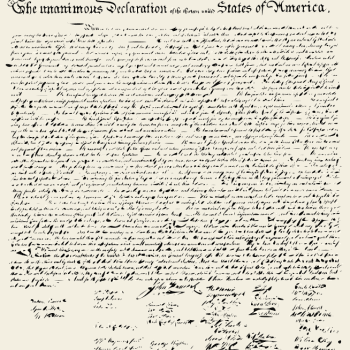That’s not just a little kid question but a genuine scientific mystery. In the early days of earth’s existence, according to scientists, the planet was just too hot for there to be water. After things cooled down, there still would have been no water. Comets have been discovered that have water vapor, so the leading theory has been that comets bombarded the earth and gave us the oceans.
But now a study has found that comet water is, for the most part, very different from earth water. Another candidate now is asteroids. But it’s hard to imagine how many comets or asteroids–which may have some water, but not all that much–it would take to create earth’s vast oceans.
From the Associated Press, The mystery of where Earth’s water came from deepens – The Washington Post:
The mystery of where Earth’s water came from got murkier Wednesday when some astronomers essentially eliminated one of the chief suspects: comets.
Over the past few months, the European Space Agency’s Rosetta space probe closely examined the type of comet that some scientists theorized could have brought water to our planet 4 billion years ago. It found water, but the wrong kind.
It was too heavy. One of the first scientific studies from the Rosetta mission found that the comet’s water contains more of a hydrogen isotope called deuterium than water on Earth does.
“The question is who brought this water: Was it comets or was it something else?” asked Kathrin Altwegg of the University of Bern in Switzerland, lead author of a study published in the journal Science.
Something else, probably asteroids, Altwegg concluded. But others disagree.
Many scientists have long believed that Earth had water when it first formed, but that it boiled off, so that the water on the planet now had to have come from an outside source.
The findings from Rosetta’s mission to the duck-shaped comet 67P/Churyumov-Gerasimenko complicate not just the question of the origin of Earth’s water but our understanding of comets.
Until now, scientists pretty much sorted comets into two types: near and far. The near ones, sometimes called the Jupiter family, originally come from the Kuiper Belt outside Neptune and Pluto. The far ones hail from the Oort Cloud, which is much farther out.
In 1986, a spacecraft came within about 400 miles of Halley’s comet, an Oort Cloud comet, and analyzed its water. It proved to be heavier than Earth’s. But three years ago, scientists examined the water in a Kuiper Belt comet, Hartley 2, and it was a perfect match for Earth’s, so the comet theory was back, stronger than ever, Altwegg said.
The comet visited by Rosetta is a Kuiper Belt comet, but its water was even heavier than Halley’s, Altwegg said. That shows that Kuiper Belt comets aren’t as uniform as thought, and it once again complicates the issue of Earth’s water.
“That probably rules out Kuiper Belt comets from bringing water to Earth,” she said.
[Keep reading. . .]
















